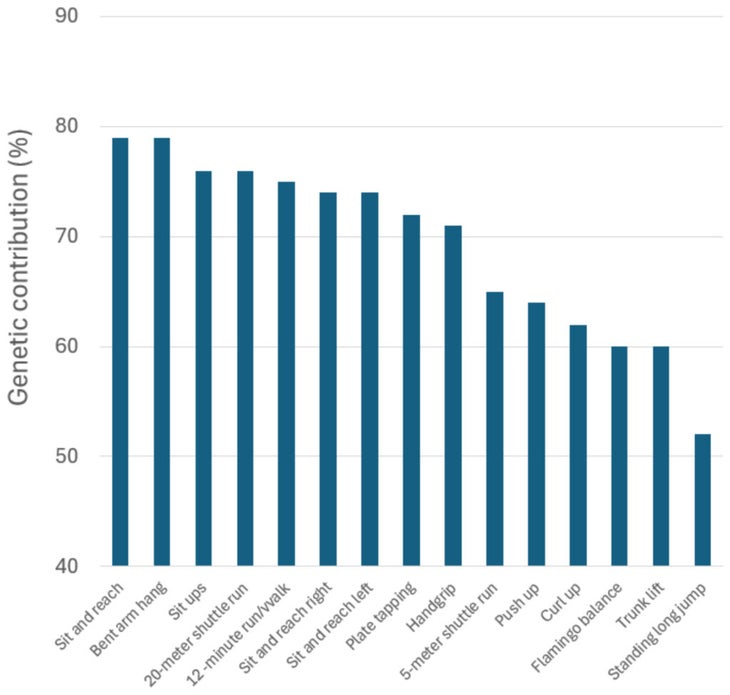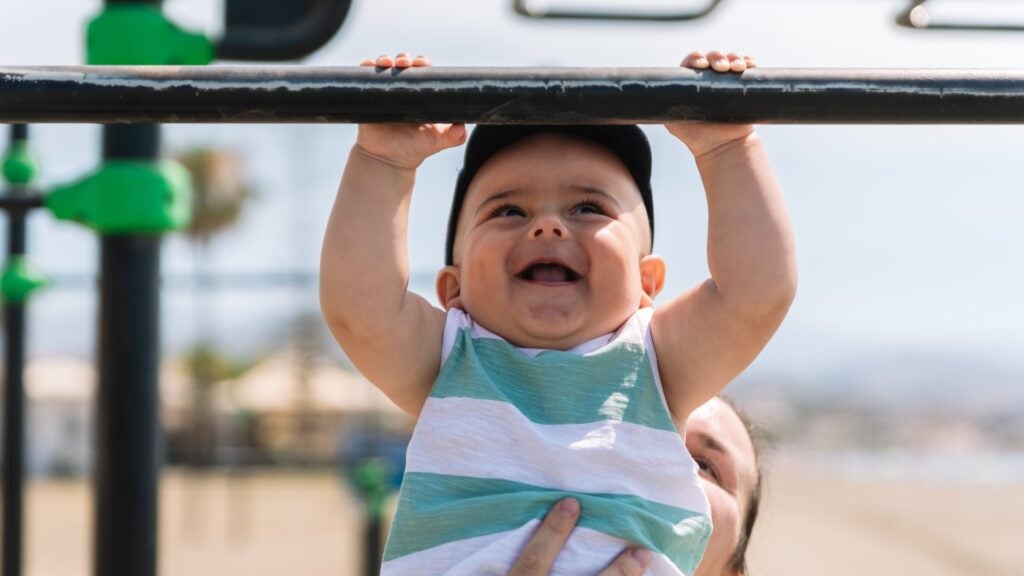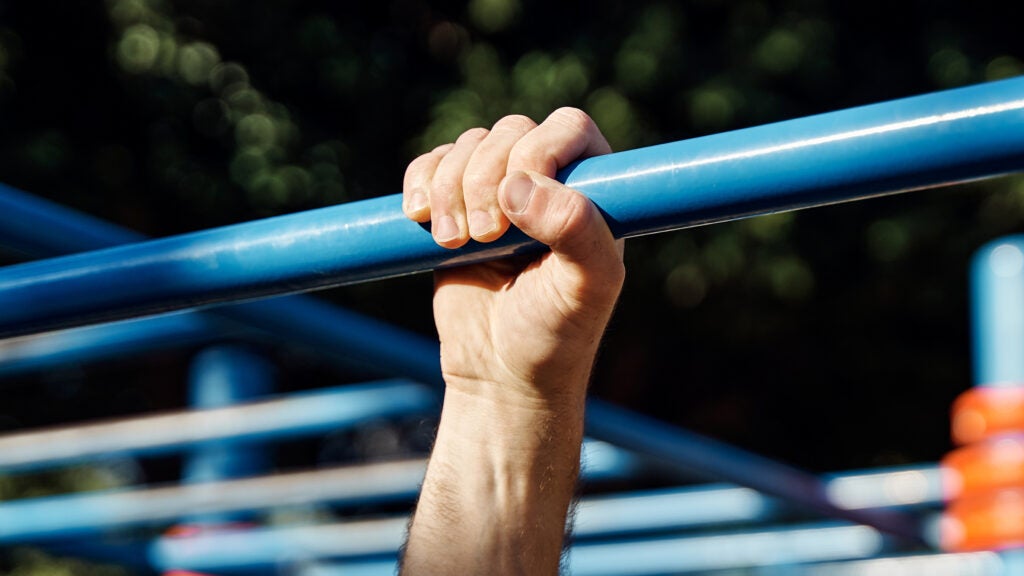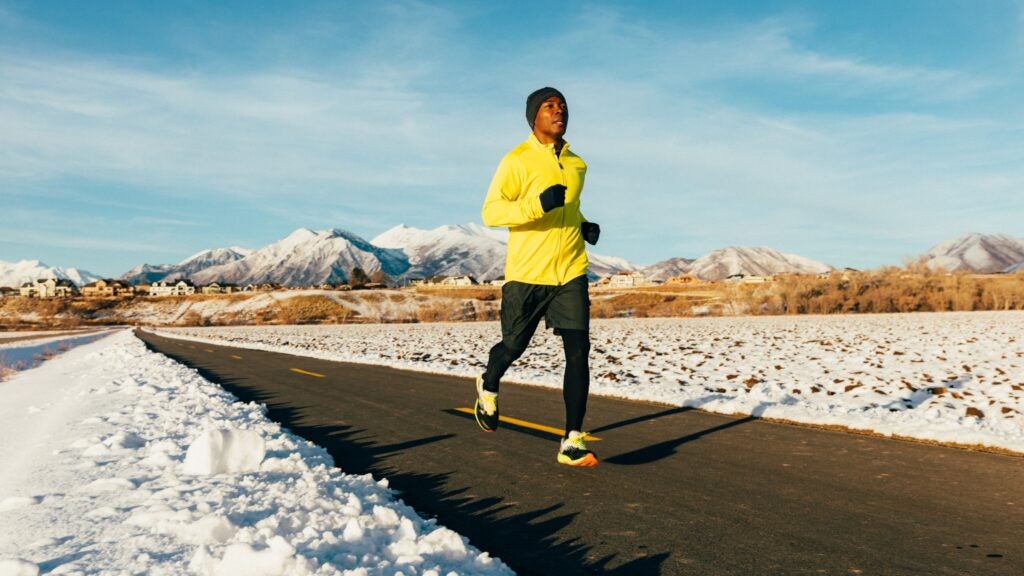I ran elementary school cross country for the first time when I was in third grade. The main thing I remember about our practices was that we spent a lot of time trying to touch our toes, and I was terrible at it. Years later, that would become a reassuring memory, because as a teen and adult runner I spent hours each week stretching and yet remained absurdly inflexible. I even have a kindergarten class photo where all the other kids are sitting happily cross-legged while I’m clearly uncomfortable, my knees nearly touching my chin. This is a fitness affliction shaped by my genetics, not a reflection of my laziness and hate of stretching.
So it’s no shock to me that a new study finds that, of all fitness domains, flexibility is the one most determined by your genes. The study, which is published in Medicine & Science in Sports & Exercise, uses data from twin pairs to tease out the respective contributions of genes and environment—talent and training, you might say—for fifteen different fitness tests. Overall, the results support the notion that picking your parents well is a crucial step on the road to athletic stardom, but they also reveal some surprising nuances about how nature and nurture interact.
How They Tested Genetic Traits Versus Trainable Abilities
An international team of researchers led by Karri Silventoinen of the University of Helsinki tested a group of 198 pairs of twins between the ages of 6 and 18 in the Portuguese archipelago of Madeira. All the twins completed a battery of 15 fitness tests, and the results were analyzed to figure out how much of the variation between individuals was determined by their genes versus their environment.
The key point is that 78 of the twin pairs were identical, meaning that they share exactly the same DNA, while the rest were fraternal (or sororal), meaning that they share on average half of their DNA. If the results of a given test are more similar within identical twin pairs than fraternal pairs, that indicates that there’s a genetic influence.
You can split the role of the environment into two components. There are shared environmental factors, like the neighborhood you grow up in, your socioeconomic status, the opportunities available to you to play sports, and so on. And there are unique environmental factors, which reflect your particular path through life: whether you joined a sports team or broke your ankle or had a great gym teacher. Surprisingly, in contrast to some earlier data, the effects of shared environmental factors appeared to be negligible in the new study, so the analysis focused only on genetic and unique environmental factors.
The 15 fitness tests came from two different standardized testing batteries. Eurofit involved the flamingo test (balancing on one leg), plate tapping (moving your hand back and forth between two plates as quickly as possible to test reaction time and quickness), sit-and-reach (touching your toes from a sitting position), standing long jump, handgrip, sit-ups, bent arm hang (holding the top position of a pull-up for as long as possible), shuttle run of 10 times 5 meters, and 12-minute run/walk. Fitnessgram involved sit-and-reach separately on the right and left sides, trunk lift (lying on the floor and lifting your stomach and upper body as high as possible off the ground), curl up (a partial sit-up), push up, and 20-meter shuttle run (better known as the Beep Test, where you have to cover the 20 meters faster and faster until you can no longer keep pace with the beeps).
What the Results Showed

Overall, as you can see from the above graph, genes played a big role in the results, with genetic contributions ranging from a low of 52 percent for the standing long jump to 79 percent for the sit-and-reach flexibility test. According to the researchers, that range of heritability is similar or slightly lower than for height and childhood BMI; on the other hand, it’s higher than the heritability of adult personality and other psychological traits.
One of the most interesting questions is the degree to which performance in one test predicted performance in other tests. After all, why do a nine-component fitness test if the same people do well in all of the components? Overall, the correlation between different tests was “modest to moderate”—that is, far from perfect. In fact, they found very little redundancy between tests (other than the three versions of the sit-and-reach test, which were measuring essentially the same thing).
The test that was most uncorrelated with the others was the trunk lift. This seems to be a skill that’s separate from, say, how fast you can run or how far you can jump. At the other extreme, the three exercises that were most correlated with the rest of the tests were push-ups, standing long jump, and the Beep Test. If you want a simple and quick way of assessing someone’s overall physical fitness, these three tests are your best bet.
The Nuances of Nature vs. Nurture
If I’d had to guess, I would have said that sprinting and explosive power abilities would be far more heritable than aerobic endurance. We’ve all heard stories about “talentless” grinders who’ve spent years putting in miles until they blossom into great marathoners. Less common, at least as far as I know, are slow, uncoordinated stumblers who put in long hours of plyometrics and weighted-sled pulls and emerge as champion sprinters. The results here don’t back up that assumption, though. Standing long jump is probably the best measure of explosive power among these tests, and it had the lowest genetic contribution.
This may be a function, in part, of the distinction between two facets of talent: untrained performance level, and trainability. This is an idea that David Epstein discussed in his 2013 book, The Sports Gene, and that has been expanded on in long-running debates about the nature of talent. Life in the 21st century being what it is, we can probably assume that the vast majority of these twin pairs were untrained, at least in a formal sense. Standing long jump performance may reflect the explosive properties of their muscles, along with the degree of coordination that they’ve developed from active (or inactive) childhoods. But it doesn’t reflect a concerted effort to train.
Similarly, the high heritability of the 12-minute results don’t reflect the effects of, say, 100-mile weeks. All these estimates of heritability reflect our starting points, but don’t tell us much about where, with sufficient hard work, we might end up. Trainability, too, is partly dictated by our genes—but for the most part, it’s dictated by different genes than your untrained performance level.
There’s one final point to make. Digging into the data, you see that flexibility (as measured by the sit-and-reach test) and aerobic fitness (as measured by the 12-minute run/walk) have some of the highest genetic contributions. It’s not necessarily the same genes, though! Those who are naturally good at one fitness domain may be terrible at another, and vice versa. And that’s not always a bad thing. In fact, there’s solid evidence that people who are less flexible tend to be more efficient runners. My pathetic inborn flexibility, it turns out, was a superpower all along.
For more Sweat Science, join me on Threads and Facebook, sign up for the email newsletter, and check out my book Endure: Mind, Body, and the Curiously Elastic Limits of Human Performance.
Source link










